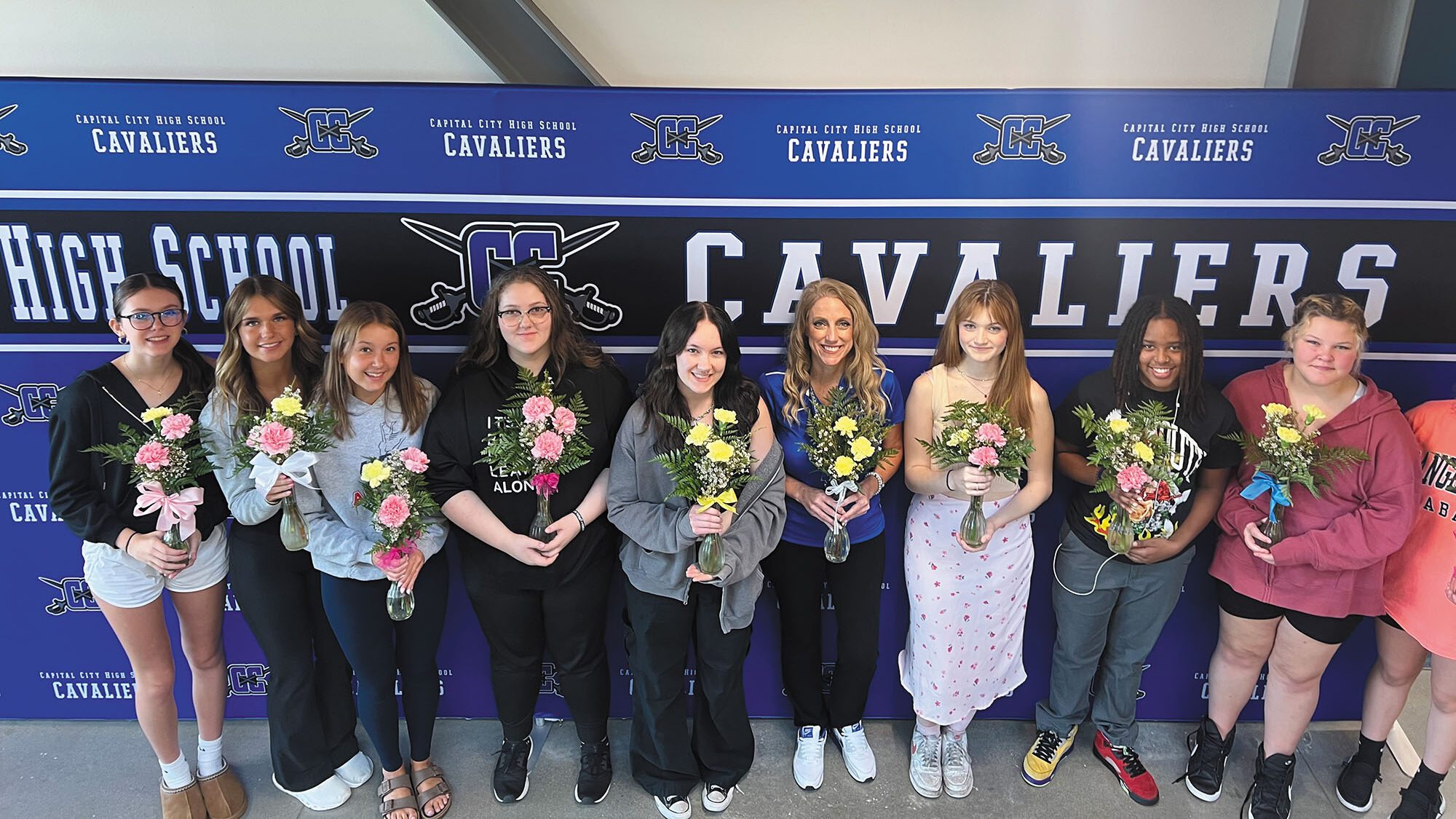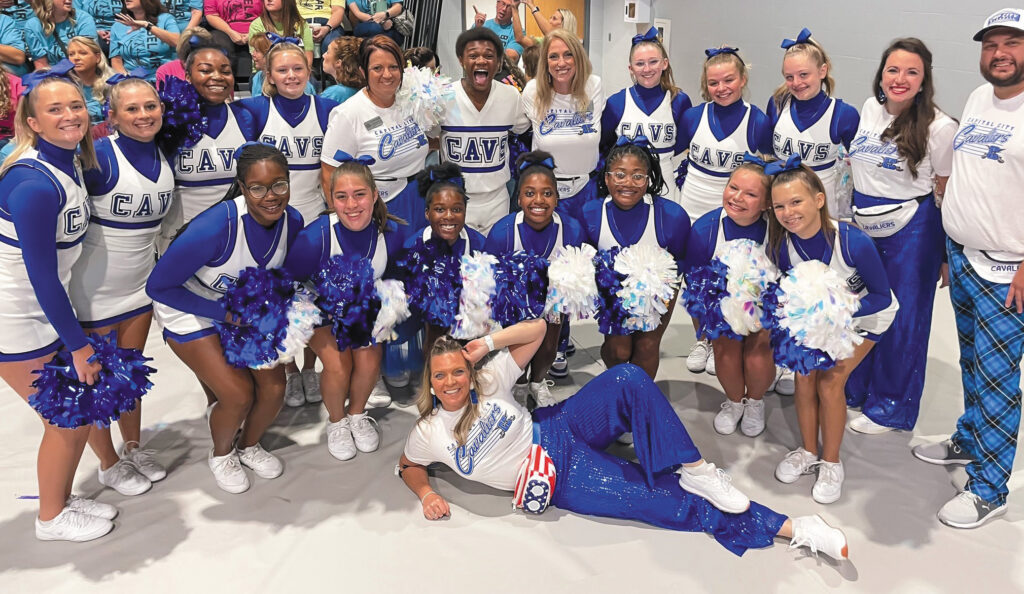Turn Up the Mic

In secondary education, the resonant voices of students can be overshadowed by the guidance of administrators and educators. However, it is paramount to recognize that these young minds possess a unique and valuable perspective that can shape the essence of the educational experience. The importance of student voice in secondary school cannot be overstated, as it not only fosters a sense of empowerment and ownership in students but also paves the way for a more inclusive and effective learning environment. This article will explore how amplifying student voices within the secondary school setting catalyzes meaningful change, enhances leadership development, and ultimately fuels the journey toward academic excellence.
Advocacy
Student Advisory Team
The purpose of a student advisory team is to provide a voice to the entire student body. Diversity in representation is critical. When moving to my new school this summer, garnering student voice was a top priority. I met with our student body president early on to brainstorm how a student advisory team would benefit our school. She agreed to co-facilitate this team with me. We worked together on developing the vision and mission of this team. We then developed an application to ensure a diverse representation of the student body.
Mission: To provide an actionable voice to the student body of our school.
Vision: Gain information about academics, culture and climate, facilities, and policy and procedures to make positive changes for our school.
Process: Once selected, the student advisory team will develop a survey around the vision topics to focus our goal for the year. The members of the team will visit classes to share the results of the survey and proposed goals. After discussing these results and goals, they will decide on priorities and action steps. Once goals are developed, they will devise an actionable plan for making these goals achievable. Our team will meet twice a month: once during the day and once before school.
Leading the Learning
Student-Led PD Days
In my previous district, staff noticed that the days before longer breaks (winter, spring, etc.) took a lot of work for students to stay engaged and accomplish academic tasks. They began to brainstorm ways to make this day more relevant and meaningful, creating the idea of a student professional development day. The goal would be to have a day of learning created by students for students. Kids would primarily present sessions but could also engage their peers in partnerships with the neighboring community and with teachers. The day would kick off with a community-building experience, such as a shared keynote or assembly and end similarly. Our students’ favorite closings included concerts by local teen musicians. Over the years, several variations were implemented.

PHOTOS COURTESY OF BETH HOUF
Shared Leadership in Daily Practices
Voice Walkarounds
This is much like an instructional walkaround, with a focus on student voice. A question of the day that can be asked as you walk through the building or during lunch or passing period can garner much information.
Question ideas:
- What is something you like best about our school?
- What is something you would like changed about our school?
- Tell me about your favorite staff member. What makes them special?
- How can I be a better principal for our school?
- What is one thing you wish adults knew about high schoolers?
- If you could develop a dream school, what is the first thing you would do?
- How do you feel our most recent (assembly, fire drill, activity, etc.) went? Why?
- If you could create any class, what would it be?
Interview Process
Involving students in the staff hiring process is an essential way to promote student leadership and can be done in several ways.
- Student tour guides: Students can give tours to the candidate and focus the conversation around specific look-fors from the school decided upon before the process. A suggestion would be to sit down with those involved to brainstorm what this should look like to ensure consistency with each ambassador. The tour guides would greet the candidate and give a tour, asking specific questions. They would then bring the candidate to the interview team and give feedback on the questions. I prefer a rubric so that the process is tightly aligned.
- Student interviewers: Students sit in on the interview process, ask questions, and give feedback on staff hiring. The interview team has previously convened to review the interview norms. I prefer to have the interview team draft questions that will be asked instead of providing questions from me. This allows each member of the team to showcase their passions in education. Each question is submitted ahead of time and is asked of each candidate.
- A combination of both tour guides and interviewees: The interview process includes students taking on both roles.
Pro tip: Clearly define roles and expectations beforehand so participants know what practices are tightly aligned and which allow for more autonomy.
When moving to my new school this summer, garnering student voice was a top priority. I met with our student body president early on to brainstorm how a student advisory team would benefit our school.
Student Ambassadors
Student ambassadors serve as greeters at school events and new student orientation. These students give tours of the building and answer questions that the new student may have regarding procedures and practices. This group also plans monthly new student social activities to continue supporting new students to ensure their smooth transition.
Tech Interns

Tech interns can either meet as a class or club to focus on pre-determined technology topics. In the past, I have asked these interns to do the following:
- Update social media accounts for the school.
- Fix computers, which made the turnaround time much quicker.
- Train staff on technology integration.
- Create the school announcements.
- Provide education to students on proactive approaches to digital citizenship.
Because technology evolves constantly, adjust this team as needed.
Student Sections
Creating student sections that are highly spirited and highly positive can be a tricky balance. Using student voice to establish the expectations for these sections is a proactive approach that can have a big impact. At our high school, the student council has a committee specific to our Blue Brigade. This team develops collaborative expectations and holds each other accountable for ensuring that they are followed.
Freshman Calibration
Taking time for a freshman “family” class meeting is a quick way to calibrate behaviors. The term “family meeting” is intentional, as we want students to realize it isn’t a time that the staff is just correcting them for poor behavior but a chance to solve problems and celebrate success. These meetings are led by both the principal and upperclassmen from the student advisory team. The modeling of partnering together, principal and students, to make our school better has been imperative to ensuring actual change.
School Board Members
Our school board added a student member from each of our high schools. These students give a monthly report of each school’s major happenings and weigh in on specific topics presented by the board.
Conclusion
Fostering and amplifying student voice in schools is not merely an aspiration but a fundamental necessity for the growth and evolution of our educational institutions. It empowers students, nurtures their sense of ownership and responsibility, and ultimately leads to a more inclusive and effective learning environment. When students are given the opportunity to be active participants in their education, they become better learners and contribute to the development of a more enlightened and responsive society. Embracing student voice is not a mere educational trend; it is the key to unlocking the full potential of our students and, in turn, the future of our world.
Beth Houf is the principal of Capital City High School in Jefferson City, MO, an NASSP board member, and a co-facilitator of NASSP’s Women in School Leadership Network.
